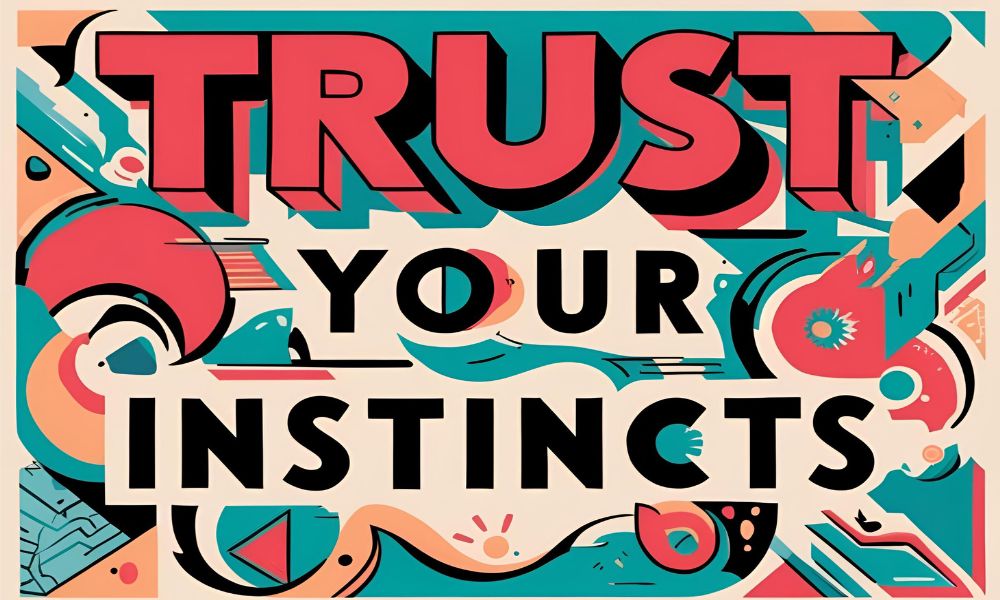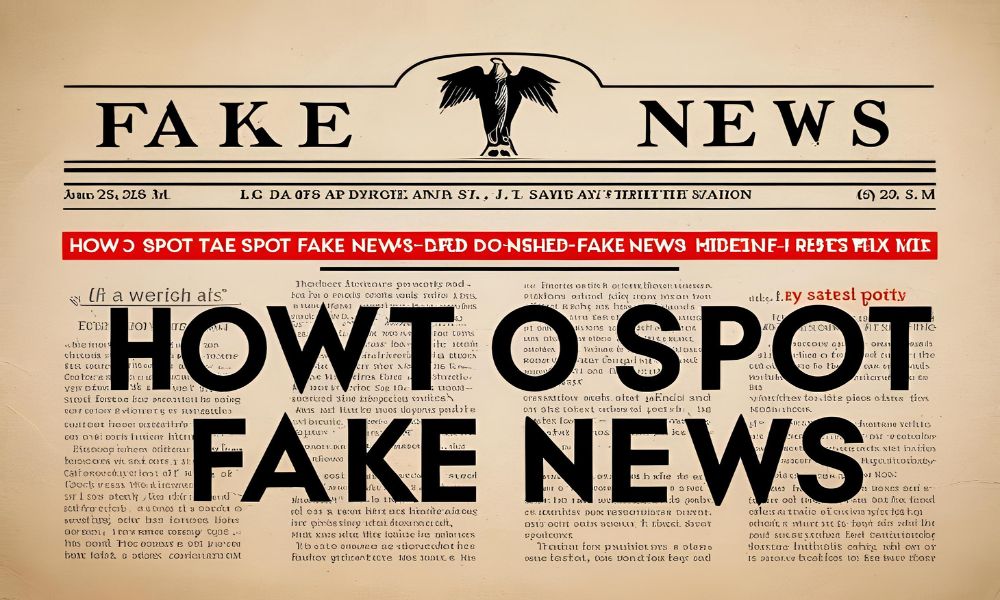When you encounter a news article, you might instinctively assume it’s reliable, but that assumption can be misleading. To effectively spot fake news, you should start by critically evaluating the source and the author’s credentials. Consider the headline’s tone and whether it matches the content. It’s essential to look for supporting evidence and check if the information aligns with established facts. But these steps are just the beginning; there’s more to uncover about the subtle tactics that fake news uses to manipulate perception. What else should you watch out for?
Understand the Source
When you come across a news article, it’s crucial to dig into the source behind it. Not all sources are created equal, and understanding where the information is coming from can be the key to identifying fake news.
Start by checking the publication’s reputation. Established news organizations usually have editorial standards and fact-checking processes in place. If you stumble upon an unfamiliar site, look for signs that it’s credible—like contact information, a professional layout, and a clear mission statement.
Next, consider the domain. Websites ending in .gov or .edu are often reliable, as they belong to government or educational institutions. Conversely, be wary of sites with sensationalist headlines or those that lack transparency about their ownership.
Finally, check for citations. A good article will reference credible sources and provide links to original research or statements. If you find a lot of opinion or hearsay without backing, it’s a red flag.

Check the Author
One key step in identifying fake news is to check the author. Before you dive into the content, take a moment to look up who wrote the article. Are they a credible journalist or an expert in the field? If the author lacks relevant experience or credentials, it’s a red flag.
Often, fake news articles are penned by individuals with no background in journalism or the subject matter.
Next, see if the author has a history of producing reliable content. A quick search can reveal their past work and whether they’ve been associated with reputable publications. If you find a pattern of sensationalism or bias, that should raise your suspicion.
Additionally, check if the author is affiliated with any organizations or groups that might influence their perspective. Sometimes, personal agendas can lead to skewed reporting.
Finally, pay attention to the author’s tone and language. If it’s overly emotive or inflammatory, it might be an attempt to provoke a reaction rather than inform.
Analyze the Headline
At a glance, the headline of an article can reveal a lot about its credibility. You should be cautious if the headline seems sensational or overly dramatic. Headlines designed to provoke strong emotions often prioritize clicks over accuracy. Look for words that exaggerate or use absolute terms like “always,” “never,” or “worst.” These are red flags.
Next, consider the clarity of the headline. If it’s confusing or misleading, it might be a tactic to draw you in without providing real information. A well-crafted headline typically conveys the main idea straightforwardly.
Also, check for sensational language. If the headline employs clickbait phrases, it’s likely trying to manipulate your emotions rather than inform you. Reliable articles generally feature headlines that reflect the content accurately and neutrally.
Finally, pay attention to the source of the headline. If it comes from a site known for spreading misinformation, it’s best to approach it with skepticism.

Look for Supporting Evidence
Supporting evidence is crucial in determining the reliability of any news article. When you read a piece of news, check for references, data, and citations that back up the claims being made. If the article mentions statistics, look for the source of those numbers. Reliable articles often link to studies, expert opinions, or official reports that support their statements.
Next, assess whether the evidence presented is recent and relevant. Outdated information can lead to misconceptions, especially in fast-changing fields like science and technology. If the article cites a study from years ago, it mightn’t reflect current knowledge or best practices.
Also, consider the diversity of sources. Articles that rely on multiple experts or studies tend to be more trustworthy than those that depend on a single source. If the news piece only presents one viewpoint, it might be skewed.
Finally, be cautious of emotional language or sensationalist claims that lack evidence. A well-researched article will prioritize facts over drama. By actively looking for supporting evidence, you can better distinguish between credible news and potential misinformation.
Verify With Fact-Checking Sites
When you’re unsure about the accuracy of a news story, turning to fact-checking sites can help clear things up. These platforms specialize in verifying claims and providing reliable information, making them invaluable tools in today’s fast-paced media landscape.
Reputable sites like Snopes, FactCheck.org, and PolitiFact have teams dedicated to researching and debunking false information, so you can trust the assessments they provide.
To use these sites effectively, start by searching for key phrases or headlines from the news story in question. You’ll often find a detailed analysis that outlines the context, sources, and conclusions regarding the claim. If the story is true, these sites will confirm it; if it’s false, they’ll explain why, often citing credible sources.
Keep in mind that not all fact-checking sites are created equal. Always choose those known for their rigorous standards and impartiality.
Examine the Date
Check the date of the news story before diving deeper into its content. Sometimes, articles circulate long after their publication, leading you to believe the information is current when it’s not. A story from last year may no longer be relevant, especially if it deals with ongoing events or rapidly changing situations.
When you spot a news piece, make it a habit to look at the publication date right away. If it’s dated years ago, pause and consider whether the information still holds value. Additionally, some headlines may resurface due to social media shares or viral posts, creating confusion about their timeliness.
You should also check for updates or follow-up articles that provide a more accurate picture of the situation. If there’s a significant development in a story that you’re reading, you’ll want to ensure you’re not relying on outdated information.
In a world where news spreads fast, examining the date can save you from misinformation. By staying aware of when the article was published, you’ll be better equipped to assess its relevance and accuracy.
Consider the Tone
The tone of a news article can reveal a lot about its intent and reliability. When you read an article, pay attention to the language used. If the tone feels sensational or overly dramatic, it might be trying to provoke an emotional reaction rather than inform you. Articles that rely on fear or outrage often serve a specific agenda, which can indicate bias.
On the other hand, a neutral tone tends to convey facts without pushing a particular narrative. Trustworthy news sources usually present information in a calm, straightforward manner. Look for articles that use balanced language and provide multiple perspectives on an issue.
If you notice excessive use of adjectives or emotionally charged phrases, take a step back and question the source’s credibility. Also, consider the audience the article seems to target. A piece aimed at inciting anger or division likely isn’t grounded in solid reporting.
When assessing tone, remember that a responsible journalist prioritizes clarity and accuracy over sensationalism. By being mindful of tone, you can better discern whether a news article is worth your attention or simply another piece of fake news.
Assess the Visuals
Assessing the visuals in a news article can help you uncover potential misinformation. Start by examining images, graphs, and charts. Are they relevant to the content? Sometimes, visuals can be misleading or taken out of context to support false claims. Check if the images look altered or manipulated. Software today makes it easy to edit photos, so don’t take them at face value.
Next, look for sources of the visuals. Are they credited? If the article uses stock images or generic visuals that don’t directly relate to the story, it might be a red flag. Authentic articles often include original photos or well-sourced images that enhance credibility.
Also, pay attention to infographics. If they present data, verify the information with reliable statistics from trusted organizations. Misleading graphics can simplify complex issues and distort the truth.
Lastly, consider the overall design of the article. Does it look professional and polished, or does it seem haphazard and poorly constructed? A lack of attention to detail can indicate that the article may not be trustworthy.
When you assess visuals critically, you strengthen your ability to discern fact from fiction.

Trust Your Instincts
While visuals play a significant role in shaping your perception of news, your instincts can offer valuable insights as well. When you encounter a news story, pay attention to your gut feeling about its authenticity. If something seems off or too sensational, trust that instinct.
Often, fake news aims to provoke a strong emotional reaction, whether it’s fear, anger, or excitement. Take a moment to reflect on why you feel uneasy. Is the headline overly dramatic? Does the source seem unfamiliar or questionable? Relying on your instincts can help you filter out misleading information.
You should also consider the context. If a story aligns too conveniently with your beliefs or prejudices, it’s worth questioning its validity. Your instincts often act as a warning system, signaling when you should dig deeper.
When in doubt, don’t hesitate to cross-check information with reliable sources. Your instincts are just one tool in your toolkit for discerning the truth. By combining your intuition with critical thinking, you’ll become more adept at spotting fake news and making informed decisions about what to believe.
Conclusion
In today’s digital world, spotting fake news is crucial. By understanding the source and checking the author, you can gauge credibility. Analyzing headlines and looking for supporting evidence helps you assess accuracy. Don’t forget to verify with fact-checking sites and consider the date and tone of the article. By trusting your instincts and staying critical, you’ll be better equipped to navigate the information landscape and avoid falling for misinformation. Stay informed and vigilant!

